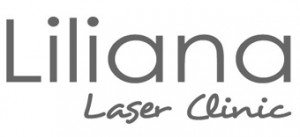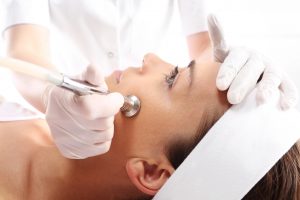Is microdermabrasion good for your skin?
When people hear the term “microdermabrasion” it can invoke something that seems invasive or risky – probably because of the term “abrasion.” However, it is simply a word that describes the process of removing a part of the skin that already naturally gets removed over time. It just does it at once leaving your skin looking fresh and clear.
How does microdermabrasion work?
Microdermabrasion is a procedure performed at a medical spa, spa or dermatologist office, that involves exfoliating the outer dry dead skin cell layer. The machines used in this procedure will polish the skin with the use of small tiny crystals or diamond tip and then suck out the loose cells with a vacuum. As you can imagine, because you are leaving your skin a bit vulnerable, it is important to stay clear of the sun and use a good sunscreen for added caution.
Can’t I do microdermabrasion at home?
There are microdermabrasion kits, machines and brushes you can use at home that are sold in drugstores or beauty supply stores. These types of at-home treatments are not as precise as an office or spa treatment. At the spa, the machines simply go deeper and they ensure everything is sterile and clean.
At home you may risk not having the most clean environment or storing your tools improperly which can lead to breakouts, infection or irritation in the skin. Nevertheless, using buffers, exfoliants and microdermabrasion at home can help keep your skin in good shape between spa treatments.
How many procedures do I need?
Some people come for one treatment. Others may have things they are really working on, such as clogged pores, blotchy skin, and fine lines where they can benefit from a series of treatments over time. Microdermabrasion can also be useful for people who have mild but regular breakouts on their skin.
Treatments are usually spaced out 1-2 months apart to allow the skin to fully regenerate.
Is microdermabrasion painful either during or after treatment?
The procedure of microdermabrasion itself is not painful at all. After the treatment, the skin might be a bit flushed and red for a few hours and a bit more sensitive. This is normal since the histamines in the skin have been touched and generally this can lead to some mild sensitivity. Fortunately some aloe, serum, moisturizer or sunscreen can be applied after that helps soothes any sensitivity. The next day any sensitivity should be gone. For people who do get histamine reactions more, such as those prone to hives or welts, either in the sun or in reaction to chemicals, they may see more blotchiness after a treatment, in which an oral antihistamine can be taken to reduce any swelling. These reactions also usually go away in hours or after a day.
Is microdermabrasion the same as a chemical peel?
Nope. Microdermabrasion is not the same process as a chemical peel, or even a resurfacing laser treatment. It is a much less invasive treatment, which you can think of as just a very professional elevated form of exfoliating. The great thing about microdermabrasion is that it can help so many little skin issues such as whiteheads, milia, pigment issues, minor sunspots, and even fine lines. Though microdermabrasion is not a cure for deep wrinkles, serious pigmentation issues or moles, for most people, the procedure is a great way to freshen up the skin as part of a facial, or by itself.


